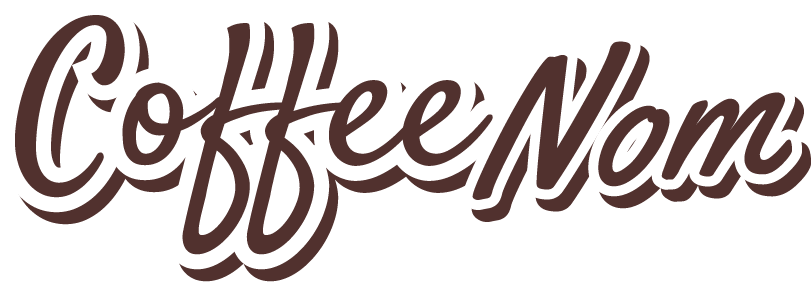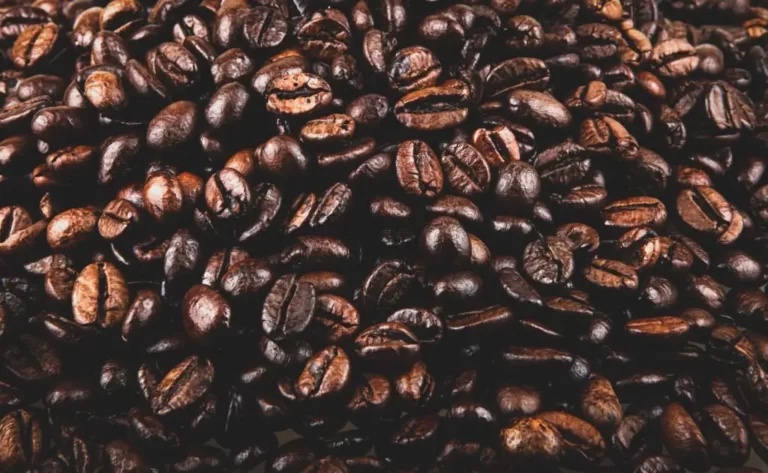Coffee is an exciting drink with endless varieties. Every cup of coffee starts the same way, with a coffee bean. Just like wine, the right choice of bean depends on your taste bud. Coffee beans have different flavors depending on their types. Today, we will get familiar with different types of coffee beans while reading as much as possible about them. Grabbed your coffee already? Then let’s go!
Different Coffee Bean Types

Three kinds of beans matter when it comes to your cup of coffee:
- Arabica
- Robusta
- Liberica.
What if I say the coffee bean is not a bean; rather, it is a seed? Yes, the seed hides inside a red fruit. Coffee belongs to the group of stone fruits, such as cashew beans, walnuts, and pistachios.
The coffee fruit usually contains two beans per fruit. But the fruits can also have only one bean. The seeds of the plant are what are usually called coffee beans.
There is a wide variety of coffee plants. Each species produces different types of fruit.
There are more than 60 species of coffee in the world. But in the coffee industry, two varieties dominate- Arabica and Robusta.
They account for up to 98% of the global coffee production. The other 2% make up the less common species Liberica.
Arabica Beans
If Arabica and Robusta had a duel, guess who would win? Arabica, without a doubt.
It is the most cultivated and consumed coffee bean in the entire world. That, of course, is because of the best taste and high-quality coffee it produces.
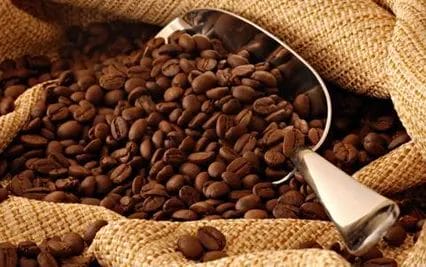
Countries of Production
The Arabica beans come originally from Ethiopia, which is today considered the birthplace of coffee. Arabica is also known as “Ethiopian Coffee” to some. It grows on coffee bean plantations throughout the world. Some of the largest producers of Arabica beans include South America, Brazil, Indonesia, and Colombia. Arabica production accounts for about 60-75 % of world production. Nowadays, the exclusive Arabica can be found in many countries of Central and South America.
Cultivation
The Arabica trees are more sensitive and difficult to grow than the Robusta beans. Since there is less Arabica coffee per hectare, it is more expensive to produce. Despite all these, Arabica is the most popular type and commercial coffee species.
This type of coffee beans requires soil with a low pH value, high moisture, and a little shade. It is best grown in mountainous climates, at an altitude of between 600-2200 meters. The plants require a temperature of 59-75 oF and grow between 2.5-4.5 meters commercially. But, in the wilderness, the plant height ranges from 9-12 meters.
Taste Profile
It’s not wrong to address Arabica beans as non-alcoholic champagne. They offer delicious aromatic richness, which gives a mild and deep taste. It also contains almost half as much caffeine as in Robusta beans, which contributes to its mild, fine, and creamy taste. This certain taste criterion caters to a huge array of avid coffee drinkers.
The taste of Arabica beans has a sweet hint of fruit, berries, sugar, chocolate, caramel, flowers, and honey. The Arabica has a light to medium body and satisfying acidity, making the Arabica beans most appreciated.
Another reason why Arabica beans are so popular is their less bitter flavor. Due to the low content of bitter compounds and caffeine, Arabica beans are less bitter.
The most popular variation of coffee coming from Arabica beans is black coffee with a medium roast. Coffee shops use the drip coffee method to serve a high volume of customers.
Types Of Arabica
The most common Arabica types are Typica, Bourbon, Caturra, Kona, etc.
Typica grows best on Mexican soil due to the supportive soil and environmental condition. It is also one of the best varieties which Mexico produces. Though Typica is a coffee with a clean and sweet taste, it has low productivity.
Bourbon coffee originated in Bourbon island, which is currently known as the Island of Reunion. One of the main production grounds for Bourbon is in Chiapas (Mexico). Bourbon is a highly desired variety worldwide.
Caturra comes from Brazil. It is produced through crossbreeding of different types of Bourbon. It gives a pleasant citrus flavor and a light body.
Brewing Recommendation
To bring the best out of Arabica beans, purchase the freshly roasted whole beans. Grind them at home (grind size entirely depends on your taste) just before brewing. And enjoy the delicacy of Arabica coffee in a drip-brewed or pour-over cup. Cold-brewing or adding cream may compromise the quality of a wonderful brew.
Shape
The Arabica variety is larger than Robusta. By looking at the Arabica bean, you discover an oval, flat-shaped, smooth body. It has an oily outer surface with a darker color, with a wave-like crack at the bean’s center.
If you are having fun reading about types of coffee beans, you will love to read our coffee bean belt article.
Robusta Beans
Robusta may not be the winner, but it is the second most-consumed bean type globally, accounting for about 38 % of total consumption. Robusta also gets referred to as “Vietnamese Coffee”, since Vietnam is one of the biggest Robusta bean producers.
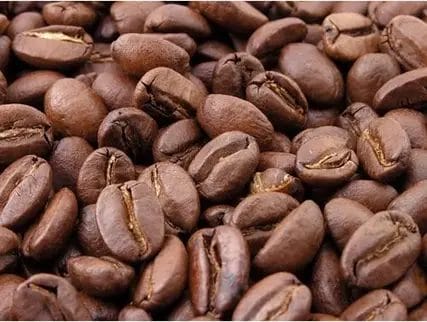
While Arabica is weak, sweet, and nice to you, Robusta is harsh. It’ll kick you in the pants when you want that extra sleep in the morning. With the first sip, you go ‘woo’ with goosebumps and eyes-rolling.
Countries of Production
Similar to the Arabica bean, the Robusta bean originates from central Africa. Robusta plantations were introduced in Vietnam in the early 20th century. Nowadays, the majority of Robusta production comes from Vietnam, Indonesia, Africa, and Brazil. Robusta trees account for 20–30% of the entire world’s coffee production.
Cultivation
The Robusta variety grows on large tracts of land. In comparison with Arabica, Robusta is more durable and easier to grow. Because they are more resistant to pests, weather, and natural disasters, that means you get a larger harvest of Robusta coffee beans per hectare than Arabica.
Robusta plants thrive at a lower altitude level. That is between 0-800 meters, and the plants grow about 4.5-6.5 meters in height. They require more rainfall than the Arabica plants and an average temperature of 64-96 oF.

The Robusta beans are the queen of caffeine. It contains about twice the amount of caffeine as Arabica beans. The higher caffeine content helps the plants fight disease and insects since caffeine can be a natural pesticide. For this, it is more economical to produce and buy in the international markets. But they offer coffee beans of inferior quality.
Taste Profile
In terms of flavor, Robusta is stronger and sharper with a grain-like dry aftertaste. If you break it down into aromas, this bean has a more earthy character. The flavor has hints of nuts and chocolates. After roasting, it has a full-bodied taste and less acidity levels.
Robusta is a great bean choice for strong coffee. It also creates a bitter coffee flavor, and a good roast is not enough to save the beans from their bitterness. Robusta gets its bitter taste from high levels of chlorogenic acid and low sugar content. Chlorogenic acid is a bitter compound, while many perceive it to be caffeine.
Uses
The bitterness of Robusta leads to the fact that it is not sold alone. It is common in instant coffee and Italian Espresso blends since it gives a clear and fine cream. It wouldn’t be wrong to call Robusta “Espresso Beans” as well. If you’re a Robusta fan, an Espresso machine will come in handy.
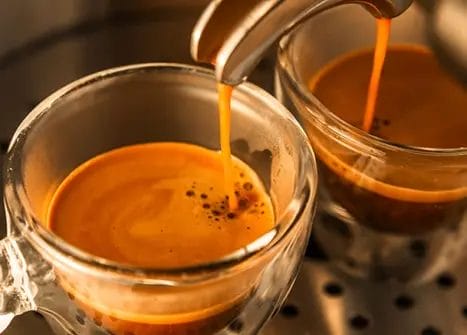
The finer Robusta varieties are often used in coffee blends combined with Arabica. In a coffee blend with Arabica, Robusta gives a fuller taste and a better crema.
Brewing Recommendation
Robusta beans are the most suitable for cold brew coffee. When making a hot Robusta drink, add milk and sugar to the brew. Fun fact: the amount depends entirely on your personal preference, and the cup of Robusta will not lose its flavor. Also, darker roasts are a better preference in case you are making Espresso.
Shape
Robusta beans are puffed or convex with a circular round shape. Before they are roasted, the beans have a paler tone, while Arabica beans have greenish. The bean has a dry outer surface.
Liberica Beans
A unique coffee bean is Liberia. It has a small market share accounting for the remaining 2% of total coffee consumption.
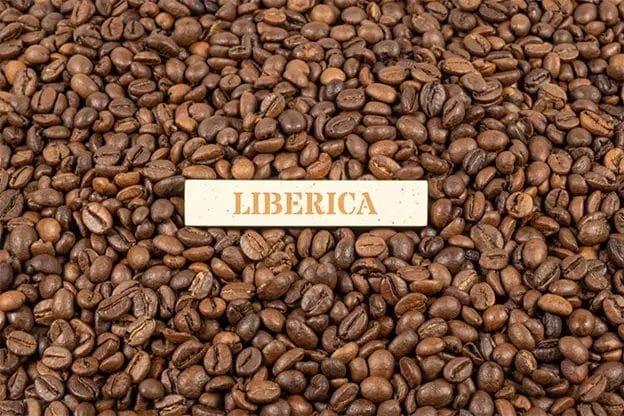
If you like challenges and try something unusual, find this rare type. Don’t worry; we are here to help you with your research data as well.
Countries of Production
Liberica coffee comes from the central and western parts of Africa. As the name suggests, the birthplace of Liberica is Liberia. It grows mostly in the Philippines as of current times. Liberica is also grown in Malaysia, Vietnam, and Indonesia. It has an interesting history in the coffee world.
Around the 1890s, coffee leaf rust (a fungal disease) destroyed 90% of Arabica production worldwide. In search of a solution, the Philippines came up with turning to Liberica production. Liberica soon became a valuable substitute for the popular variety. After this period was over, Liberica disappeared from the scene again.
Cultivation
Liberica trees thrive in hot and humid climates at low altitudes. It has a longer maturation time than Arabica and Robusta, which takes around 12-14 months. Liberica coffee bushes grow up to 20m high. It is very resistant to parasites. The lifespan and production volume per coffee tree are also higher for Liberica.
Taste Profile
The coffee has a very distinct and strong taste. Some claim that it barely even tastes like coffee. Rather it tastes woody. The variety has a lower content of both sugar and caffeine.
Coffee enthusiasts recognize a Liberica cup with floral, fruity flavors and a bittersweet aftertaste. Liberica has a light to medium body.
Having fun to read types of coffee beans? Check out our coffee producing countries article.
Excelsa
Excelsa was classified as a separate bean until 2006. But today, it is a variant for Liberica beans. Although it has a distinct taste and complex flavors, the bean shapes are similar.
Brewing Recommendation
To enjoy Liberica’s aromatic, earthy flavor, brew it on your own after a light roast. It is perfect for making a cup of espresso.
Shape
The shape of a Liberica bean resembles a large tear-drop, which is an irregular shape for a coffee bean. The beans may look like tears of sorrow, but they are enough to bring tears of joy to a coffee lover. They are harder and less juicy.
The Choice Is Yours!
Taste is a very personal preference. Take time and discover your favorite choice of coffee beans.

The market offers lots of coffee. They are different in their blend, degree of roasting, freshness, and price range. It is interesting how you can recognize different types of beans with the naked eye. Allow yourself to try to experiment and discover all these fantastic coffees, and expand your coffee experience.
Remember, coffee is the solution for everything.
Had fun reading types of coffee beans? You’ll love to read our coffee comes from what plant article.
FAQs
Liberica coffee has a very smooth taste with a lower content of both sugar and caffeine, making it an exceptional choice among the coffee community.
Starbucks uses high-quality Arabica coffee beans.
Robusta bean is the cheapest to produce and buy in the international markets.
Mainly there are 3 types of coffee. Arabica, Robusta and Liberica.
A coffee bean is a seed that is carried inside a coffee cherry.
